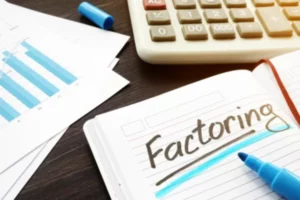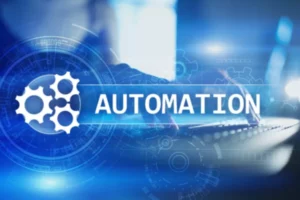Our lives are full of choices. Sometimes, it’s easy to make a decision. In other cases, taking time is critical since the decision is crucial to success. In business and management, it’s vital to make decisions fast, but chosen solutions must be beneficial.
Business owners can develop decision-making frameworks to ensure the high quality of their decisions. Keep reading our article to learn more about decision-making frameworks.
Understanding a Decision-Making Framework
A decision-making framework is a tool or a technique a business or an individual uses to make a decision. This framework or model outlines all key activities necessary for making a decision. It also provides an overview of the process.
There are different types of frameworks, and each has a structure. This structure is critical as it provides guidelines on how to evaluate a decision based on a company’s values and goals. A framework aims to help teams consider such factors related to the decision as:
- context;
- consequences;
- best and worst outcomes.
If a company has a framework for decision-making, it dramatically reduces the time to find the best solution. Moreover, it makes it easier to decide since everyone knows their responsibilities regarding the decision-making process.
Development of Decision-Making Frameworks
Typically, if the company’s management makes a decision, it uses a framework. Every business has a different decision-making framework. It is recommended for business owners to develop a decision-making framework since one set of rules can help boost a company’s growth.
A predefined guide for reaching a consensus among company managers can improve the company’s efficiency. Moreover, a framework can optimize interpersonal dynamics within the organization and ensure the best outcomes for the company. No “one-fix” exists for every organization, so business owners must develop decision-making frameworks that suit their situations.
Decision-Making Сlassification
Before we dive into different types of frameworks, let’s learn more about decision-making classification. Typically, experts recognize three major classifications of decision-making:
- Strategic decisions that set the company’s course.
- Tactical choices define how the management operates the company.
- Operational decisions determine how employees run the company daily.
Here’s a simple example. A coffee shop network has a rule that if customers complain about bad service, they get a bagel or doughnut free of charge. This rule has strategic, tactical, and operating decision-making backing it up.
The network owner strategically decided to implement the best customer service in the area. The management made a tactical decision to offer a bagel or doughnut free of charge in case of receiving a complaint from the client. Waiters or managers of each coffee shop within the network decide whether the complaint is valid and deserves a free bonus.
Types of Decision-Making Frameworks
There are several types of decision-making frameworks. Let’s see some of the most common frameworks so you can get started. The list goes as follows:
- logic tree model;
- working backward;
- regret-minimization framework;
- decision matrix;
- accepting uncertainty;
- Eisenhower matrix.
People have created different approaches and tools to decision-making, but not every option can fit a specific business or individual. So, check the following most useful frameworks and choose the most suitable.
Logic Tree Model
The logic or decision tree is a critical thinking model. It is based on root-cause analysis. The idea is to visualize the problem by decomposing it into small chunks. The model was first described in the 1960s and used to track triggering events that may lead to failure. Today, the model is used in decision-making.
Here’s how it works:
- specify the problem;
- list all possible solutions (even if unrealistic);
- consider each solution and list potential triggers;
- create a tree based on collected data.
When the tree is ready, you can see all positive and negative outcomes. Implementing this model in management may be tedious since it requires a lot of work, but it’s worth it to save time in the future. However, it’s critical to list all potential problems of a business.
Working Backward
This model should be perfect if a company uses such techniques as brainstorming or blue-sky thinking. The idea is to create a clear structure a team will use when brainstorming or blue-sky thinking. Creating a model requires identifying the final goal. When the goal is set, work backward, stating all necessary steps to reach the goal.
Regret-Minimization Framework
This model minimizes regrets by considering long-term goals instead of short-term gains. The idea is to project oneself in the future at an old age. Then the person has to visualize whether missing a specific opportunity has negative or positive results.
Decision Matrix
Stuart Pugh coined the model. It is based on a mathematical approach to categorizing solutions with multiple characteristics (or dimensions). Here’s how it works:
- List all options in a column.
- Choose comparison criteria and insert them in the first line of a table.
- Score each criterion. Consider 5, 10-point, or any suitable scoring system.
- Evaluate each criterion to prioritize each characteristic. Consider using the 1 to 10 system, where 1 is terrible, and 10 stands for excellent.
- Multiply the score by its values.
- Add all numbers in each line to get the total score.
Here’s a simple example to figure out how the system works. Suppose Helen runs a coffee van. She is considering adding some options to the menu. Helen can’t choose between several options, such as ice cream (which requires an ice cream machine), bagels, or croissants. So she uses the decision matrix and uses a simple table.
| ease: 4 | cost: 5 | maintenance: 5 | total score | |
ice cream machine | 7 x 4 = 28 | 5 x 5 = 25 | 6 x 5 = 30 | 83 |
buying fresh bagels | 8 x 4 = 32 | 8 x 5 = 40 | 10 x 5 = 50 | 122 |
| buying fresh croissants | 8 x 4 = 32 | 7 x 5 = 35 | 10 x 5 = 50 | 117 |
So, the criteria are ease, cost, and maintenance. Helen uses the 5-point system to evaluate each criterion. Ease of use is critical but not as essential as cost and maintenance.
Then Helen used a 10-point system to evaluate each option’s characteristics. For instance, buying fresh bagels is easy, so it’s an 8. It’s also cost-effective when purchasing in bulk, so it’s an 8 again. And maintenance is a 10 since cleaning a box where she keeps these bagels is easy.
Then Helen multiples the score by its value in each case. According to the table, the best solution is to buy fresh bagels daily.
Accepting Uncertainty
Many decision-makers prefer to ignore uncertainty. However, it is recommended to consider that the information may be incomplete, which could lead to a flawed decision. That’s why decision-makers may accept uncertainty if there is no other option or the cost of avoiding this solution is too high. This model is popular when it comes to environmental policy decisions.
Eisenhower Matrix
A US Army Captain, Dwight D. Eisenhower, developed this model. He introduced it in the 1950s as a framework that aims to help make better decisions. According to the Eisenhower Matrix, a person has to break the decision-making process into four boxes: do, decide, delegate or delete.
Here’s an example of how the model looks:
| Urgent | Not urgent | |
| Important | DO (Urgent, Important)
| DDECIDE (Not urgent, important)
|
| Not Important | DDELEGATE (Urgent, not important)
| DELETE (not urgent, not important)
|
It’s a lot easier to decide something according to this table. It’s critical to do an urgent and important task. You can delegate the task to your team if it’s urgent but not important. Then take care of important and not urgent tasks. The last task isn’t important or urgent, so ignore it.
Advantages of Developing a Decision-Making Framework
The simplest decision-making tool is outlining the pros and cons of a solution. This tool is helpful in everyday life. However, businesses require decision-making frameworks. However, some companies prefer operating without decision-making frameworks.
Developing a framework to make decisions is a tedious and lengthy process. So, why is it beneficial for an organization to develop its framework? Check out a few advantages of having a custom framework:
- Saves time. Employees with guidelines that help them make everyday decisions don’t waste managers’ time. Moreover, making simple decisions takes less time and positively influences the company.
- Takes off the burden from the management. A framework outlines the company’s values and its course. The management makes decisions according to the framework that aligns with the company’s course. It facilitates the process of finding the right decision, while the management is positive that it meets the company’s goals.
- Defines roles and responsibilities. A team reaches consensus faster since everyone knows their roles. Frameworks greatly reduce friction points regarding the ambiguity of who has to come up with a solution. A framework defines every employee’s role in the decision-making process.
- Fills in the gaps to avoid lack of context. A typical framework has a step where the team collects relevant data to develop an informed solution. Thus, it ensures the team closes information gaps.
- Consistent process. Companies expand, and teams grow. When new employees hop on board, they start doing things their way if the business doesn’t have a framework. Having one set of rules makes it easier to explain every individual’s responsibility.
Thus, you need an effective framework since it gives the right tools to your team. Whenever team members have to support their decision, they can check the guidelines.
How To Develop A Decision-Making Framework?
If you are starting a business, consider creating a framework for decision-making. Having a framework takes off the burden from the management of the company. A set of rules is especially helpful in recurring scenarios.
Here is a short guide on how to create a decision-making framework:
- List all potential outcomes of a situation. Predict any possible results of a decision. From this point, moving toward the right choice should be easier.
- Set the period and delegate responsibility. Set the period for each decision. Consider if it should be a quick decision or if it’s important to take time. Delegate responsibility to specific employees so that decision-making is more efficient.
- Set guidelines for collecting information. Making the right decisions requires gathering any related information. Create a set of rules for gathering and filtering data to get useful information.
- Risk management. It’s critical to list all the risks of making a bad decision. List every bad outcome and whether it’s wise to take the risk in each case.
- Outline the company’s values. Everyone has values, but in the company’s decision-making process, the decision should reflect the organization’s values. It’s a critical task, especially when you have a team of employees, since everyone has to reach a consensus.
- Outline the pros and cons of each solution. Having a framework where each solution has a list of pros and cons makes it easier for the management to estimate potential outcomes for the company.
Creating a framework sounds like a tedious process. However, it requires spending time once on the guidelines that your managers will use for years. Frameworks save time and effort in making different types of decisions.
Key Takeaways
You can run a business without implementing a decision-making process. However, having one set of rules for your employees makes it much easier for everyone involved to find the best solution. Consider implementing the easiest model and test whether running a business is easier. It should make a big difference and facilitate the decision-making process. Make adjustments if necessary.

















